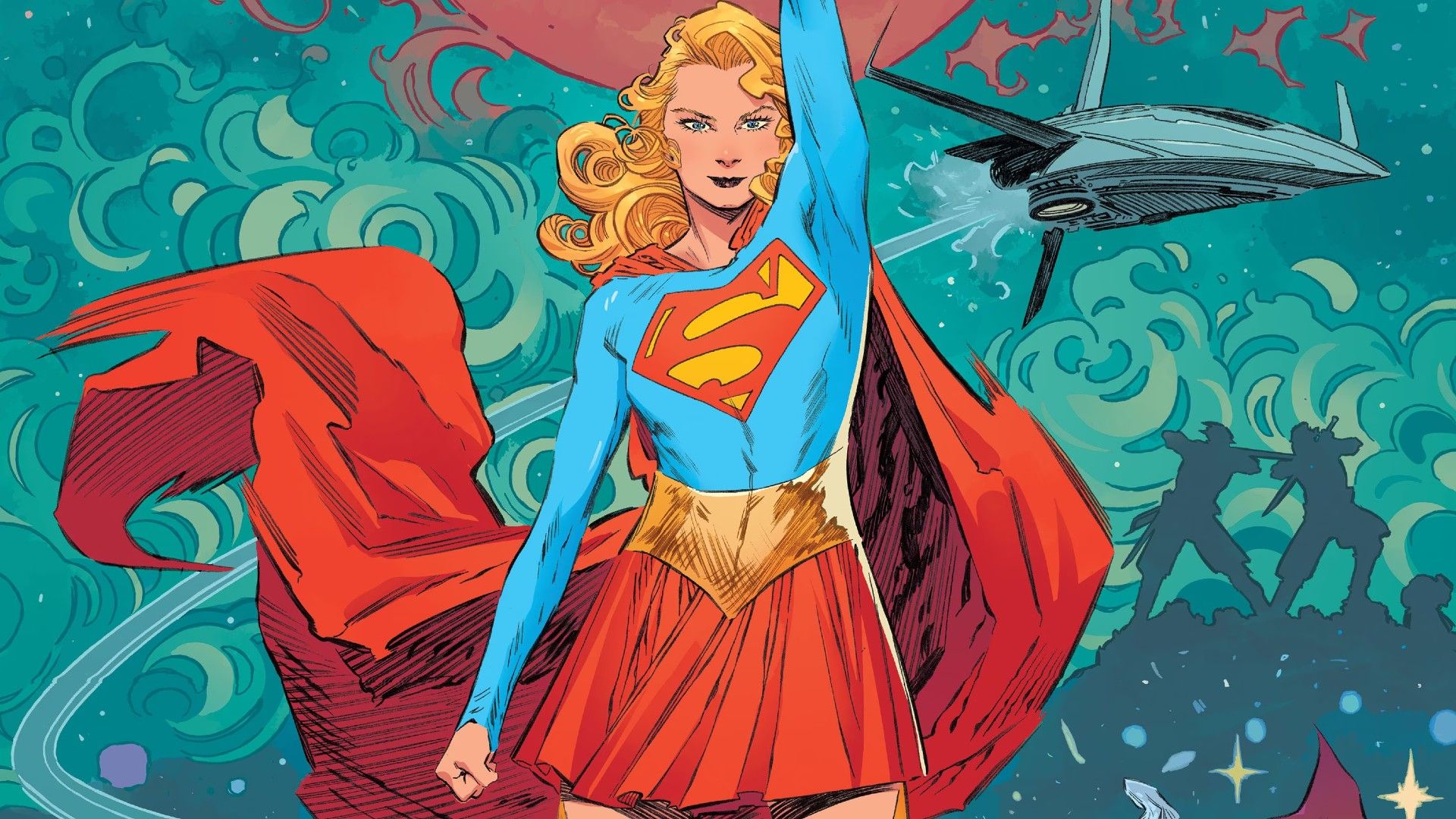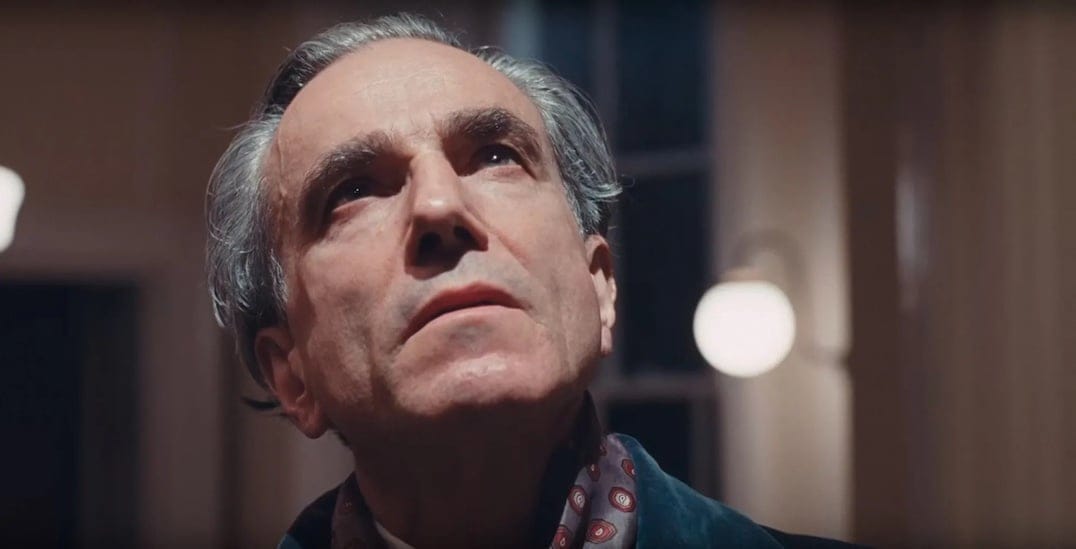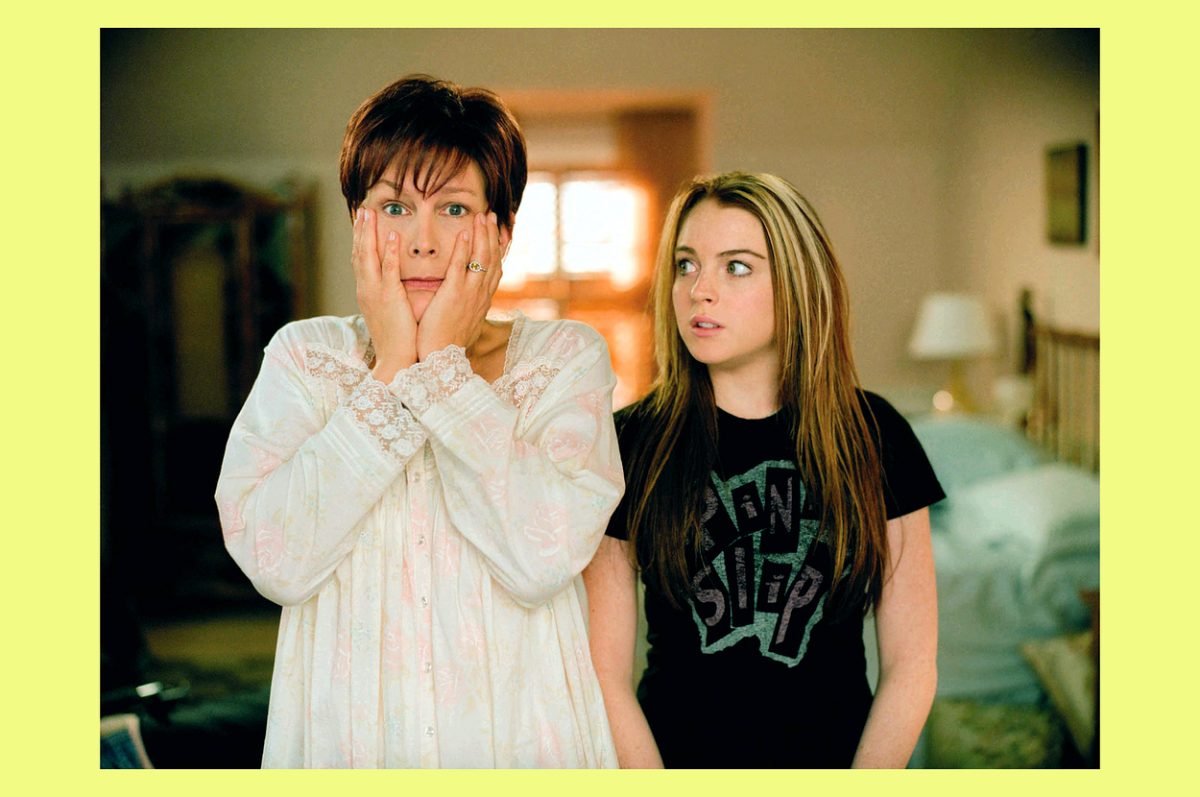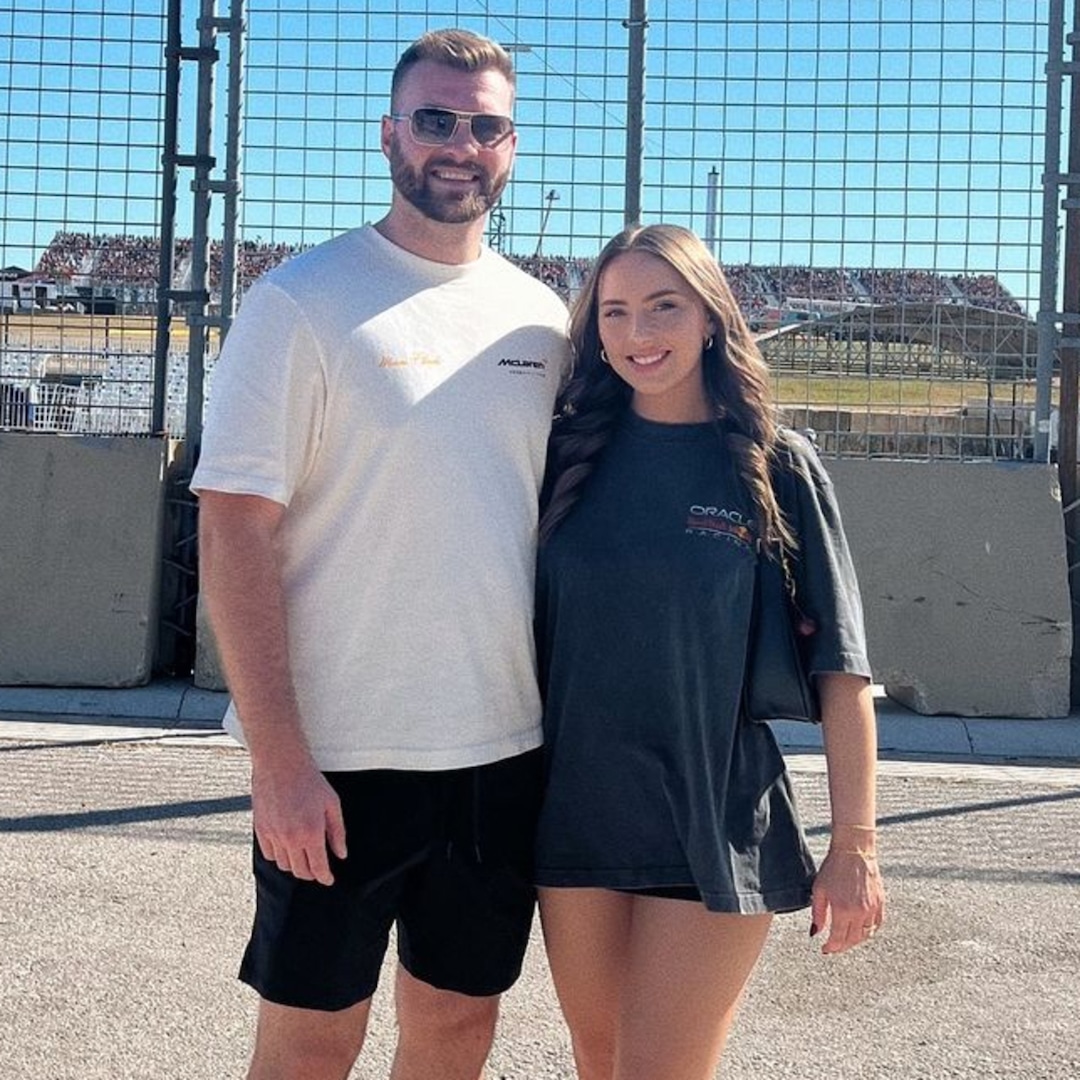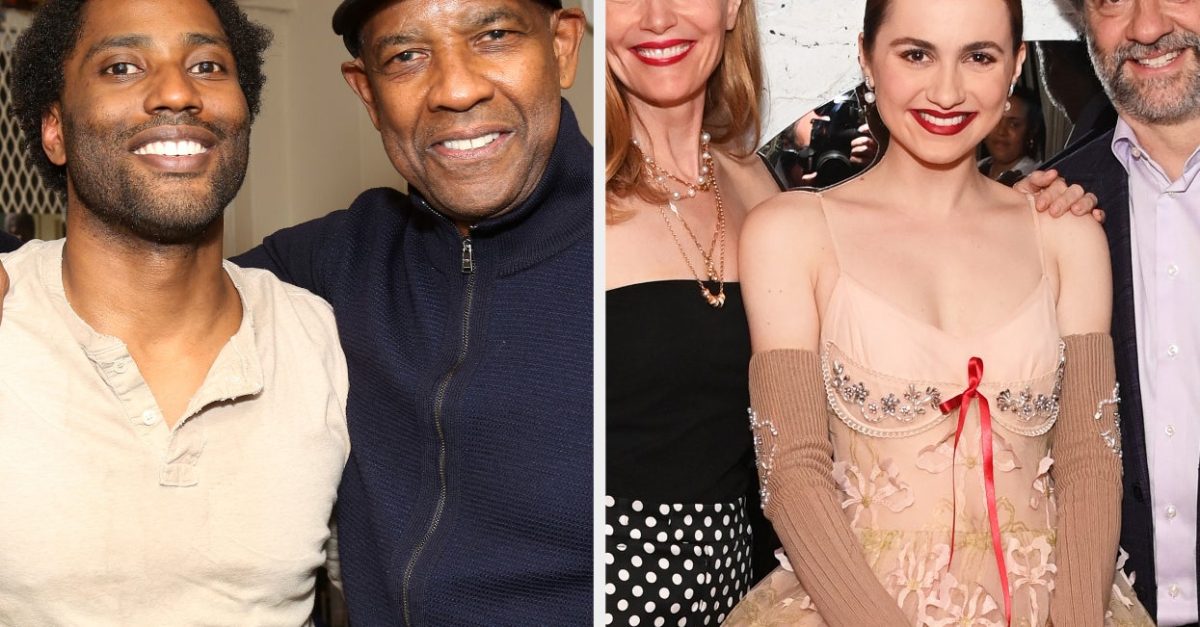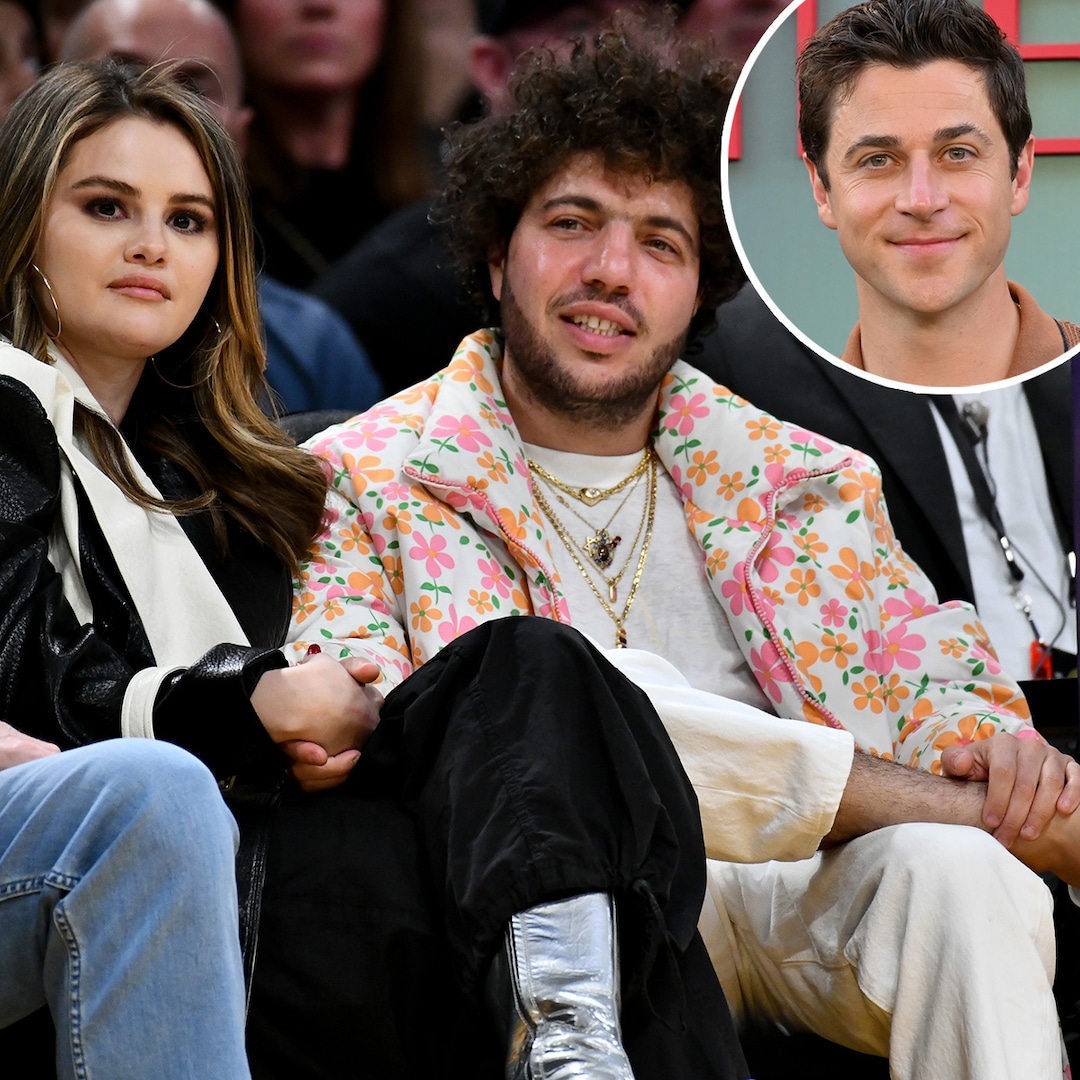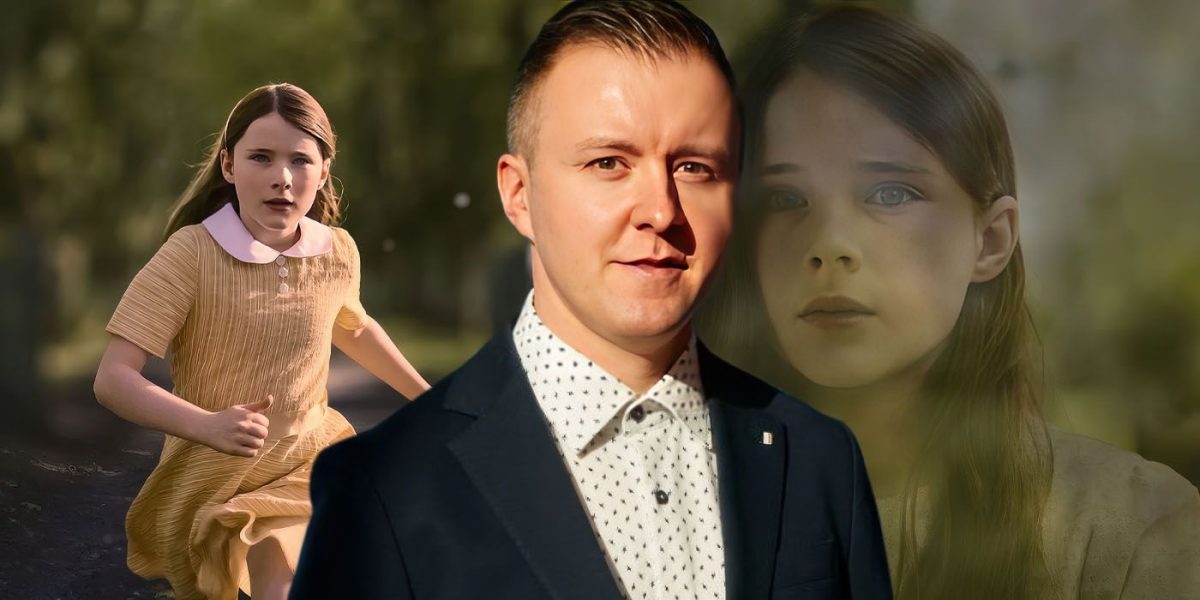
‘The Quiet Girl’ Director Colm Bairéad Talks Irish Language and Oscar History
Feb 24, 2023
In case you hadn’t noticed, Irish cinema has been having a moment. Part of it is due to Colin Farrell’s eyebrows and a donkey called Jenny. But a massive contribution made this year has come from Colm Bairéad’s An Cailín Ciúin. The film has made history as the first time Ireland has been nominated for the Best International Picture Oscar. Based on the English-language novella, Foster, by Claire Keegan, the film follows a, you guessed it, quiet girl, called Cáit (Catherine Clinch) as she has one fateful summer away from home in early ’80s rural Ireland.
Colm Bairéad grew up speaking Irish and has built a career directing Irish-language stories, from television shows to short films to TV movies. He has worked closely with TG4, the Irish-language television network in Ireland (who were one of the production companies behind the film). He wrote and directed his first short, Screwed, back in 2003. In 2015, he directed a docuseries called The Joy, about one of Ireland’s largest prisons, Mountjoy. It was when Cine4, the Irish-language cinema initiative took off, that he decided to venture into narrative feature films. He decided to adapt a short story published by The New Yorker, which went on to be published as its own novella and is even studied in the final years of the Irish school system. He produced the film with his wife, Cleona, who are raising their own children to be fluent in the Irish language.
It really is hard to believe that An Cailín Ciúin is Bairéad’s first foray into narrative feature filmmaking. Not just because of the extensive and worldwide praise for the film, but because of how naturally the story comes together. The imagery is powerful but understated, the actors inhibit their characters, and it ends in one of the most emotional and powerful sequences I’ve ever seen put to film. All of it just screams skill that has been harnessed for some time. It’s definitely down to Bairéad, having spent over two decades honing his crafts in other mediums and genres.
So, Collider’s resident Irish person and one of the most exciting Irish filmmakers working today discuss his beautiful film, a staple Irish biscuit that speaks volumes, and what all the international praise for this film may mean for the future of Irish-language cinema.
COLLIDER: Obviously, it’s a massive year for Irish cinema. I just want to warm up by asking what are your favorite Irish films, and who are the Irish filmmakers who’ve inspired you in your career?
COLM BAIRÉAD: I guess, obviously, like most Irish people in the ’80s and ’90s, the work of (directors) Jim Sheridan and Neil Jordan was always there. And that felt like, okay, this is Irish Cinema. So, My Left Foot was a big movie in my life as a kid in terms of Irish films and then The Field and stuff like that. But I guess in more recent times, I’ve been a really big fan of (director) Lenny Abrahamson’s work and I think he’s got a really beautiful kind of sensibility and a restraint and a kind of naturalism as well to his work that I really respond to. I would say they’re the kind of touchstones for me in terms of Irish cinema.
I’m not surprised at all because when I was watching An Cailín Ciúin, I remember thinking “God, this is so like Garage,” which is one of my all-time favorite films. So I mean that is a high compliment. I definitely saw the similarities between you and Abrahamson come through in the film.
BAIRÉAD: And Lenny’s a real master of point of view in cinema as well, which our film is obviously an exercise in point of view in a very pronounced way. So yeah, I guess there’s a certain kinship maybe there between myself and Lenny in some respects, just in terms of our sensibility, maybe. But yeah, Garage is amazing.
I want to go back to the very start of this process. What was it about Claire Keegan’s novella that made you not just make it into a film, but make it into an Irish-language film? Did you start the book thinking, “Oh, I might adapt this,” or did you just stumble upon it and say, “I want to make this film”?
BAIRÉAD: When I was reading it, I did have my cap on of, “Is this suitable as material to be adapted? And also specifically, is this suitable as material to be adapted into an Irish-language feature film?” Because I was highly aware of the fact that there was this new feature film scheme that had been launched in Ireland called Cine4, which was specifically designed to develop and produce Irish language cinema. And given my own personal history or my kind of work history in terms of short films and everything, they’d all been in the Irish language. And I had a longstanding relationship with TG4 (Irish language television network) and I just felt like I really needed to get one of these films. I was like, “This scheme is kind of perfect for me in a way.” So when I opened Foster, I was kind of hoping, “Okay, can this work as an Irish language story?”
And I quickly realized that it was perfect on that front because the action of the story takes place on two farms, essentially. So the idea of moving the story into an Irish language setting — and as you know in Ireland, where the language is spoken as a working language, they’re almost exclusively rural areas — so straight away I could see that this could totally work in an Irish language setting. And Irish audiences first and foremost, they’ll buy into this. They won’t say, “Oh, that’s not us. That’s true to life,” or whatever. So that was the first thing that I wanted to satisfy, or the first audience I felt the film needed to satisfy was the Irish audience who would believe in it, who would accept it as being authentic on that front. But then really, it was primarily obviously the emotional effect that the story had on me.
I just fell in love with it. I just thought its presentation of this young point of view was extraordinary, and it felt so empathetic and beautifully rendered and just really compassionate. And also, there was a lovely elliptical quality to it, in that you didn’t know exactly what was going on at all times. Which is a very truthful representation of the childhood experience, I guess, particularly, for a child of that era who probably had slightly less agency or had less things explained to them than children nowadays. So I liked that there were all these gaps in a way that you had to fill in as a reader. And I was intrigued by the notion of bringing that to a piece of cinema. And also, I just loved the restraint of the whole thing. The emotional restraint of it is beautiful, and then it just hits you at the end with this crushing but strangely hopeful moment.
Image Via Break Out Pictures
The ending-
BAIRÉAD: Is amazing. In the book, I mean. Hopefully, the ending of the movie is-
The ending of the film, I can assure you, is one of the most effective endings I’ve ever seen. But that does lead me to my next question. At any point were you like, “Oh, I want to make the ending a little less ambiguous”? Were you ever tempted to be like, “I’m going to write in the last five pages, and she goes home and lives with them forever”? Because it’s a very faithful adaptation of the book. Was that really important to you throughout the process?
BAIRÉAD: I feel like the book ends on such a beautiful, perfect moment. And to me, what happens afterward is kind of irrelevant. And I feel like the story has stated its case in a way, by that point. I think everything else afterward is by the by, to some extent. But also, I like that it leaves room for the audience to project their sort of interpretation of how Cáit’s life might play out from that point. The film and the story, the original story, I think it’s shown you how she’s changed, how she has grown over the course of this summer and how she’s taken this step into young adulthood with that final gesture of the film. Because in a way, she almost becomes the parent in that moment. She’s holding this broken adult. It’s almost like a reversal of roles and a kind of reciprocal gesture on her part.
I take kind of hope from that because I think that means that she has grown, and she has seen a new way of living in a way. And that’s something that you’re always going to carry with her going forward.
Something I really noticed and admired about the film was that there isn’t this overwhelming Catholic or religious presence. It’s kept very subtle, but it’s still authentic. Did you constantly want to keep religion at bay, or was that something that just kind of came naturally as you were making the film?
BAIRÉAD: I guess it’s really born more out of a sense of being truthful to the original. It’s funny, we did actually shoot a scene. Because in the book, there’s a scene where they go to Mass, and we had to cut it out. But it wasn’t out of any sense of trying to eliminate that aspect of Irish society from the work. Although I did always feel like the Kinsellas were less sort of religious than perhaps your average Irish people, that there was-
They turned on it ever since the tragedy.
BAIRÉAD: Perhaps, or that they just weren’t quite as invested in that sort of thing, that there was something slightly different about that household. It’s interesting though that you say that. We were very careful in terms of the authenticity of the period, but we didn’t want to sort of fetishize it either. We didn’t want to romanticize it or harp on too much in terms of drawing attention to a certain detail that’s screaming, “Here we are in 1981,” or whatever. But we were still very careful that all of the detail is still in there, but that it’s sort of seated or bedded into the texture of the film rather than the film really drawing attention to it. But it’s lovely to hear that, particularly from Irish audiences, the film has gotten the nod of approval on that front. It’s an authentic kind of rendering of Ireland at that time and of how we were as a people to some degree.
I do think anyone with a sense of Irish society at that time can still feel the sort of presence of all of these sorts of structures societally in the background as it were. Even the fact that Cáit’s mother is pregnant again with an unwanted child is essentially a sort of commentary on the fact that women themselves had far less agency in terms of their reproduction. And there’s no access to contraception really at that point. I think it was technically available from 1979, but you had to go to your family doctor and you had to be married, and it was very difficult to have access to contraception and so forth. So I think the presence of that stuff is still to be felt there for those who have this kind of understanding and the kind of sensitivity for that detail.
Image Via Break Out Pictures
Yes, I think keeping it as an undercurrent definitely added to the authenticity. Because I think Irish people, when they see themselves represented in film by maybe filmmakers who weren’t brought up in Ireland, it emphasizes certain things, it doesn’t feel true to life. But what very much felt true to life, which I think is probably one of the most powerful shots I’ve ever seen in cinema, is the Kimberley. Describe the Kimberley to someone from outside Ireland. What does it represent in the film? And can you talk to me about that shot. It’s such a simple shot, but probably the most effective in the film. I’d just love to know how you conjured it up.
BAIRÉAD: The Kimberley isn’t in the book, so I guess it was born of an understanding of that type of Irish man who’s not able to really say how he feels or able to even apologize or just to verbalize any kind of complex emotional or sense of self. I needed something that was going to be a habitual thing for him. You’d see him in the kitchen at various points; this was a tradition as many farmers have, that they come in, and they have their cup of tea at a certain time. And I just thought, “Okay, well, he’ll probably have a biscuit with his cup of tea.”
And then it just became evident to me and said, “Well, that’s a beautiful way for him to gesturally apologize to this girl and show kind of affection to her.” And it’s such a staple of Irish life, the Kimberley biscuit. It’s been in everyone’s cupboard. You know what I mean? And I did enjoy just writing that in. I kind of felt like Irish people would really connect with that moment, but not to that degree. It’s become almost the most famous, certainly in Ireland, image from the film, which has been kind of funny to witness.
On a last note, what does it mean for you to be the person that brought the first Irish language film to be nominated for the Oscar? Not that the award’s most important, but I think a lot of Irish people would’ve thought this day would never come. And are you hopeful for the future of Irish language cinema, especially in regard to it getting an international audience?
BAIRÉAD: Well, first off, we’re the first Irish language feature film, just to be totally accurate.
Image Via Break Out Pictures
Sorry, sorry. You’re dead right.
BAIRÉAD: There was an Irish language documentary short in 1973, a Louis Marcus film called Páistí ag Obair (Children at Work). But yeah, we’re the first Irish language feature and the first time Ireland’s been nominated in the international category and all that. It means so much to me and to Cleona, the producer, who’s also my wife. We’re Irish speakers, and we’re raising our own kids in Dublin through Irish. And then just the broader Irish language community is so buoyed by everything that’s happened with this film. And I think Irish people in general, I know most Irish people don’t have a great command of the language, but you ask the average Irish person, and they’ll always say, “Oh, I’d love to be able to speak it. I’d love to have a better command of it.” So I think there’s a huge amount of national pride, and we’ve just felt so supported by everyone at home.
And there’s just so much goodwill, I think, towards the film. And hopefully, that goodwill will extend to all these other Irish language films that are coming down the line, because our film is the product of increased investments by certain stakeholders back home in Irish language cinema. So that’s going to continue. So hopefully our kids in 20 years will be able to look back on this whole filmography of Irish language cinema and enjoy it and be inspired by it, and it’ll continue to keep the language alive and relevant in a cultural sense, certainly.
Well, win or lose next month, the entire country is behind you. Go raibh maith agat (“thank you” in Irish), Colm.
BAIRÉAD: Thanks a million. Go raibh maith agat.
Publisher: Source link
If you could swap lives with one celeb for a day, who would it be?
Guy Fieri (for the food).View Entire Post › Disclaimer: This story is auto-aggregated by a computer program and has not been created or edited by filmibee.Publisher: Source link
Oct 24, 2024
Eminem’s Pregnant Daughter Hailie Jade Shares Baby Souvenir From Texas
Born in 1955 at a military base in Kansas, Debbie is the mother of Eminem. She married the "Without Me" artist's father Marshall Bruce Mathers Jr. when she was 15, according to her 2008 memoir My Son Marshall, My Son Eminem. She began…
Oct 24, 2024
I'm Genuinely Curious If You Think These Nepo Babies Are More Talented Than Their Famous Parents
Tell us how you really feel!View Entire Post › Disclaimer: This story is auto-aggregated by a computer program and has not been created or edited by filmibee.Publisher: Source link
Oct 23, 2024
Selena Gomez’s TV Brother David Henrie Details Meeting Benny Blanco
Selena Gomez isn’t the only one who thinks Benny Blanco is magical. The Wizards of Waverly Place alum’s onscreen brother David Henrie—who stars in and executive produces upcoming sequel series... Disclaimer: This story is auto-aggregated by a computer program and…
Oct 23, 2024
